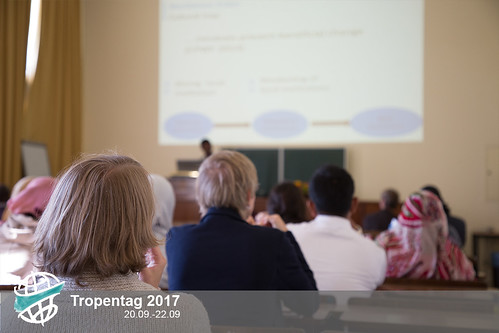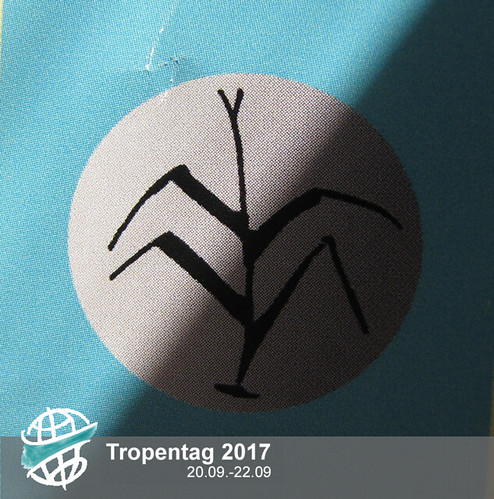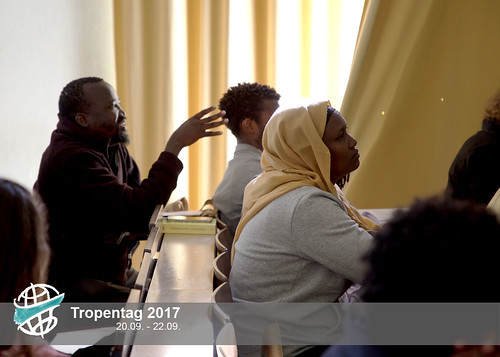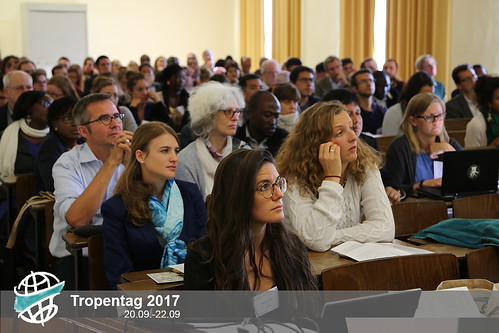Oral Presentations 2017
Is there an I in 'Science?'
Thu, 09/21/2017 - 18:00 — megreslerBy sharing her narrative as a young girl who questioned why some crop fields were peppered with trees while others were not, Lin Bautze from the Research Institute of Organic Agriculture in Germany unintentionally posed an important question to the audience of Oral Presentation III "Production Methods" on Thursday afternoon. Should research stand by itself, without acknowledging the role of the researcher? Or does the lived experience of a researcher, like Bautze, and the ways it shaped the trajectory of her research, create a new space for the audience to explore the research?
This is certainly a controversial discussion between qualitative researchers, whose position on the research paradigm may vary. Quasi-foundationalists, like myself, would acknowledge a unique lens through which individual researchers analyze and interpret their data. Assuming their analysis is conducted with purposeful reflexivity and self-awareness, I believe that research in #FutureAgriculture has something foundational to gain from the person/s involved in gathering, sorting, analyzing and interpreting their data. From this perspective, I argue we are better equipped as researchers when we allow our intersectionalites to contribute to robust analyses of our data.
This is what Bautze has done in her exploration of alley cropping as an adaptation strategy for a future changing climate in Africa. This should also be the direction #FutureAgriculture research continues moving forward in.

Attention: Bring your research closer to farmers!
Thu, 09/21/2017 - 17:01 — Hana KhanhIn order to increase the productivity of potatoes in Rwanda, researchers created new certified seeds (formal system) to replace the commonly used, low quality and low yielding seeds (informal system). However, unfortunately, Leone Ferrari and her team found that certified seeds are still underutilized.
While conducting her research on four of the most productive districts in Rwanda for potatoes, Leone Ferrari realized that farmers using certified seeds represented only around 5% of the national required demand. Producing certified seeds in Rwanda is necessary, but is still not enough.
She insisted that the formal and informal systems of potato seeds in Rwanda must be complementary and mutually dependent. She recommended developing strong linkages with farmers to distribute certified seeds.
In the end, it comes back to the fundamentals, a close relationship with and awareness of farmers. Hopefully, her research add urgency to the need for experts, researchers, policy makers to put more effort in bringing their research and work closer to the farmers.
Young Scientists Work to Make a Healthier Soil
Thu, 09/21/2017 - 14:38 — mustamin.fadliAt the first oral presentation on soil and soil fertility today there were five young scientist presenting their work. I found two very interesting. Steffen Werner from the University of Bochum tried to answer if urban agriculture can contribute to food security by reducing nutrient losses. His two years work in Ghana used biochar and water irrigation to reduce nutrient losses. Urban and peri-urban agriculture is characterized by higher input and soil degradation. Excessive use of mineral fertilizer can lead to losses of nutrient through leaching.
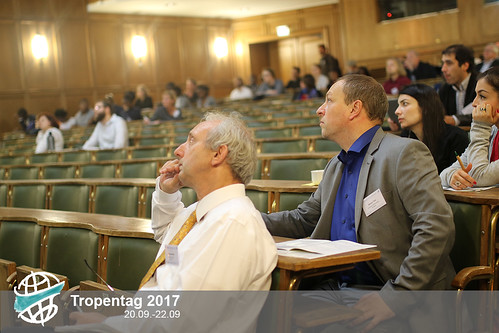
However, his results still showed increased nutrient leaching, especially of N, P, Ca, Mg, and Na. He suggested more appropriate irrigation, because that proved effective in lowering leaching .
Irabella Thiemann from the University of Bonn tried to find out if flow paths in maize-paddy rice cropping system can be a hotspot for nutrient cycling. Maize-paddy rice cropping systems consume less water during the dry season. Changing systems from maize to rice led to desiccation cracks in the soil. Her research studied the role of this crack, where anaerobic conditions lead to methane emissions.

Better in the Ground than in the Freezer
Thu, 09/21/2017 - 14:13 — marlemkeWhile Global Crop Diversity Trust, as pointed out by Elena Popova in her oral presentation, accumulates more than 757, 000 seeds in their “Nordic gene bank” (NordGen) in Norway, a US$ 9 million project, smallholder farmers from all over the world simply cultivate grow theirs in the form of landraces to sustain themselves.
I believe we have to critically evaluate this development. On one hand, it’s good to have this reservoir of different crop plants and more than 80.000 seeds are distributed to farmers in 157 countries in the global South from the seed banks. On the other hand, resistance traits related to climate change such as drought tolerance and water logging don’t develop over night – and still less in a seed bank, possibly decades being stored there.
We need more biodiversity, but in the fields, not in the refrigerator.
Where Does the Water Go?
Thu, 09/21/2017 - 13:25 — kristianj71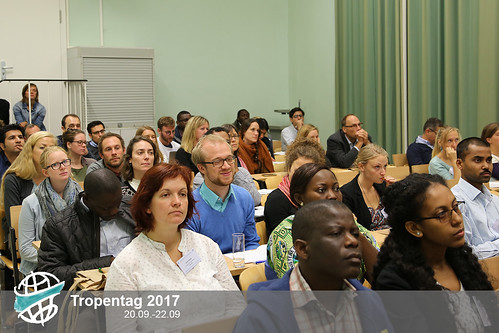
You have to throw caution to the wind when you walk into the oral or poster sessions. You never know what you are going to get.
The "Water and Irrigation" oral presentations ranged from brave, young newcomers exposing their masters’ theses to the world, to veterans summarizing already published work. Here, as in most disciplines this conference, modeling has assumed a large role. After the session, I grabbed Dr. Giese from the University of Hohenheim, who pointed out though that, while part of the future of agricultural science, there were significant constraints due to limited available data. After all, without any connection to the real world, models have little relevance.
Limitations to Moving Forward
Thu, 09/21/2017 - 13:15 — megreslerHalfway through Day 2 of Tropentag 2017, limitations to productivity seem to be a recurring theme across many disciplines.
Bulle Dabasso, from the University of Nairobi, described to his audience a bottleneck in economic potential, the limited market value of lean animals in Kenya. His study provided a detailed description of Stratified Cattle Production (SCP) as an option for improving market value for lean animals, therefore increasing the economic potential of pastoral livestock production in Kenya. Debasso's explanation of the necessity of addressing this bottleneck seemed relevant in the context of his research, but I was left desiring further exploration of the social and ecological limitations which almost certainly also work to impede productivity.
Certainly, I'm not the only one. Is it not fair to say that research in #FutureAgriculture must consider not only the economic limitations of moving towards productivity transformation, but also the ecological and social limitations embedded within context-specific research?

In Ghana, It's all About Standards
Thu, 09/21/2017 - 12:58 — Hana KhanhAmong the six presentations during the "Markets" oral sessions this morning, Nkoyo Bassey from the University of Bonn caught lots of attention. Her work promised to bring many benefits to farmers in Ghana by applying quality grading standards for maize to reduce post-harvest loss (PHL).
In her research "Marketers Consciousness for Quality Loss Reduction: A Case from Maize Marketers in Ghana", Nkoyo Bassey and her team experimented and analysed the influences of establishing a standard grading system for the quality of maize produced by farmers in two districts in the Brong-Ahafo region of Ghana. Until now, the quality of harvested maize grains was decided mostly subjectively according to its physical appearance by farmers and buyers. Therefore, there is an increased possibility of losing certain amounts of usable grain, which costs the farmer. By comparing the existing scenario of current market situation on subjective grading and the hypothesized scenario with grading systems, her research found out a significant impact of grading standard. While the former scenario showed a low acceptability of marketers (around 44%), the latter one clearly confirmed the benefit of grading scale with a double rate of acceptance.





